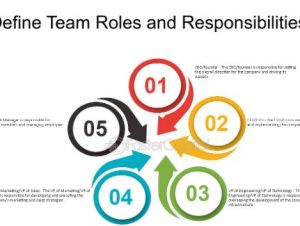What Is the Knoster Transformation Model?
The Knoster Transformation Model provides a clear and structured framework for managing complex change in organizations. This model is instrumental in guiding leaders through the process of implementing effective change by addressing potential obstacles and ensuring key components are in place. It is based on the work of Tim Knoster and has been widely recognized for its practicality and effectiveness in educational and business environments.

Core Components of the Knoster Model
The model outlines five essential components that need to be addressed to successfully manage change: Vision, Skills, Incentives, Resources, and Action Plan. When any of these elements are missing, specific problems can arise, leading to failure in the change process.
1. Vision
Having a clear and compelling vision is crucial. It provides direction and helps everyone understand the purpose and expected outcome of the change. Without a clear vision, confusion is likely to ensue, diminishing the likelihood of successful implementation. For instance, a study found that 71% of successful change initiatives begin with leaders who articulate a vision that resonates with the individuals affected by the change.
2. Skills
The individuals involved must have the necessary skills to implement the change. Lack of skills leads to anxiety, which can significantly hinder progress. Providing training and development is a critical step in preparing your team for change. Research shows that organizations that invest in training are 32% more likely to successfully adapt to change.
3. Incentives
Incentives motivate and encourage positive attitudes towards the change. If the change process lacks proper incentives, resistance might occur. Effective incentives align with the vision and create a desire to participate in the change, increasing engagement and commitment.
4. Resources
Adequate resources, including time, equipment, and personnel, must be available to support the change efforts. Insufficient resources can lead to frustration among the team members, which can stall or even derail initiatives. For instance, in a survey of managers, 54% cited lack of resources as a significant barrier to implementing change.
5. Action Plan
A detailed action plan outlines the steps necessary to achieve the change. This plan should include timelines, responsibilities, and milestones. Without a clear plan, false starts or uncoordinated efforts can occur, which often lead to ineffectual results.
Implementing the Knoster Model
Assessing Readiness for Change
Before implementing the model, assess the organization’s readiness for change by evaluating each of the five components. Identify gaps and develop strategies to address them effectively.
Engaging Stakeholders
Successful change requires buy-in from all stakeholders. Engage them early in the process by communicating the vision and benefits of the change, addressing concerns, and highlighting the incentives.
Monitoring and Adjusting
Change is dynamic, and adjustments are often necessary. Regularly review the progress of the change initiative and make adjustments to the plan as needed. This flexibility can be the key to navigating unforeseen challenges.
Conclusion
The Knoster Transformation Model is a powerful tool for managing complex change. By ensuring that vision, skills, incentives, resources, and an action plan are all aligned, organizations can significantly increase the chances of successful change implementation.
For more detailed strategies on navigating complex change, and to further explore the Knoster transformation model, visit the comprehensive guide available online. This resource provides valuable insights into each component of the model and practical advice on applying it effectively in any organizational setting.